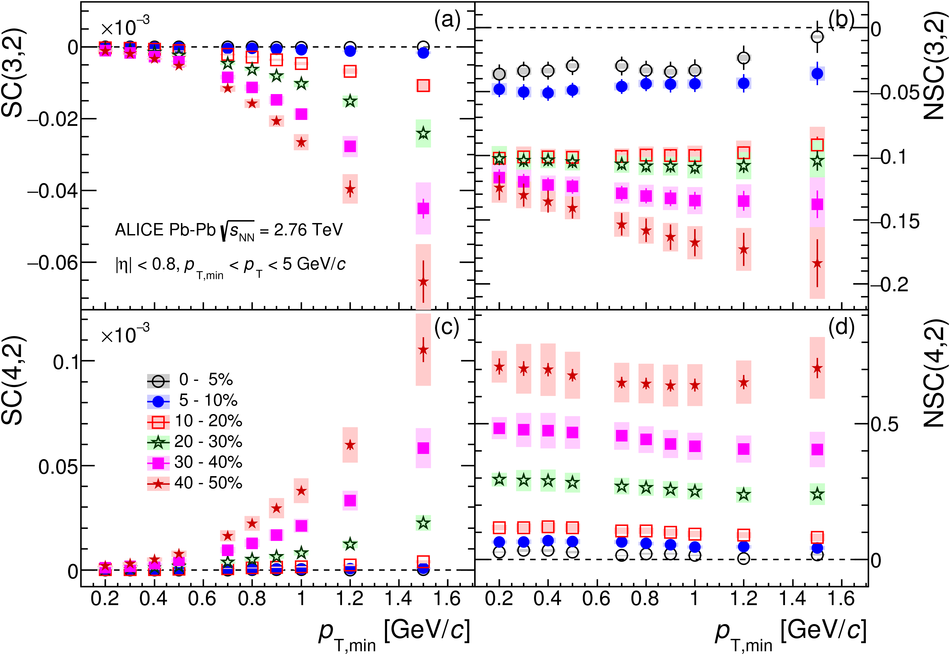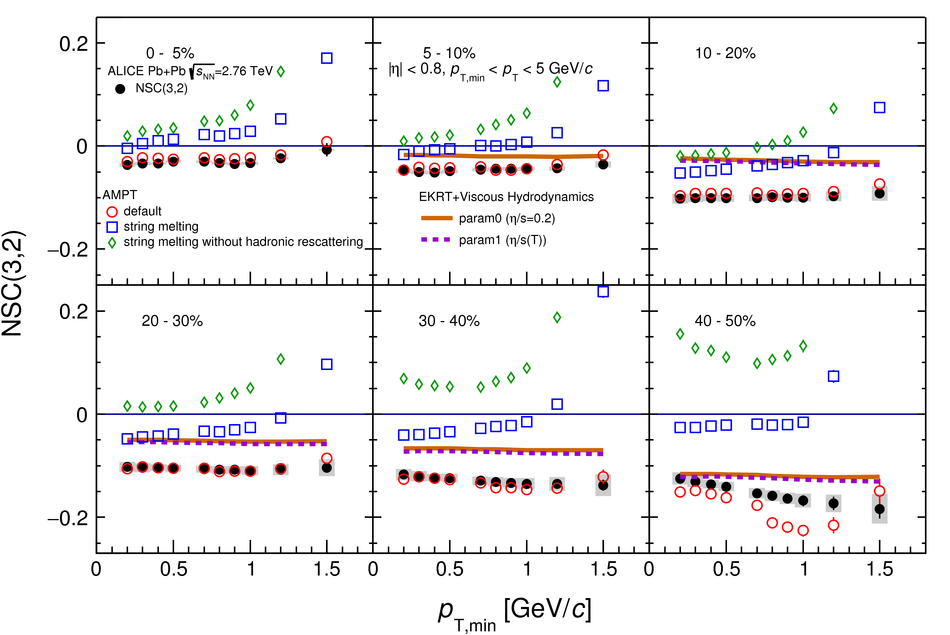The correlations between event-by-event fluctuations of anisotropic flow harmonic amplitudes have been measured in Pb-Pb collisions at $\sqrt{s_{\rm NN}}$ = 2.76 TeV with the ALICE detector at the Large Hadron Collider. The results are reported in terms of multiparticle correlation observables dubbed Symmetric Cumulants. These observables are robust against biases originating from nonflow effects. The centrality dependence of correlations between the higher order harmonics (the quadrangular $v_4$ and pentagonal $v_5$ flow) and the lower order harmonics (the elliptic $v_2$ and triangular $v_3$ flow) is presented. The transverse momentum dependences of correlations between $v_3$ and $v_2$ and between $v_4$ and $v_2$ are also reported. The results are compared to calculations from viscous hydrodynamics and A Multi-Phase Transport ({AMPT}) model calculations. The comparisons to viscous hydrodynamic models demonstrate that the different order harmonic correlations respond differently to the initial conditions and the temperature dependence of the ratio of shear viscosity to entropy density ($\eta/s$). A small average value of $\eta/s$ is favored independent of the specific choice of initial conditions in the models. The calculations with the AMPT initial conditions yield results closest to the measurements. Correlations between the magnitudes of $v_2$, $v_3$ and $v_4$ show moderate $p_{\rm T}$ dependence in mid-central collisions. This might be an indication of possible viscous corrections to the equilibrium distribution at hadronic freeze-out, which might help to understand the possible contribution of bulk viscosity in the hadronic phase of the system. Together with existing measurements of individual flow harmonics, the presented results provide further constraints on the initial conditions and the transport properties of the system produced in heavy-ion collisions.
Phys. Rev. C 97 (2018) 024906
HEP Data
e-Print: arXiv:1709.01127 | PDF | inSPIRE
CERN-EP-2017-215










